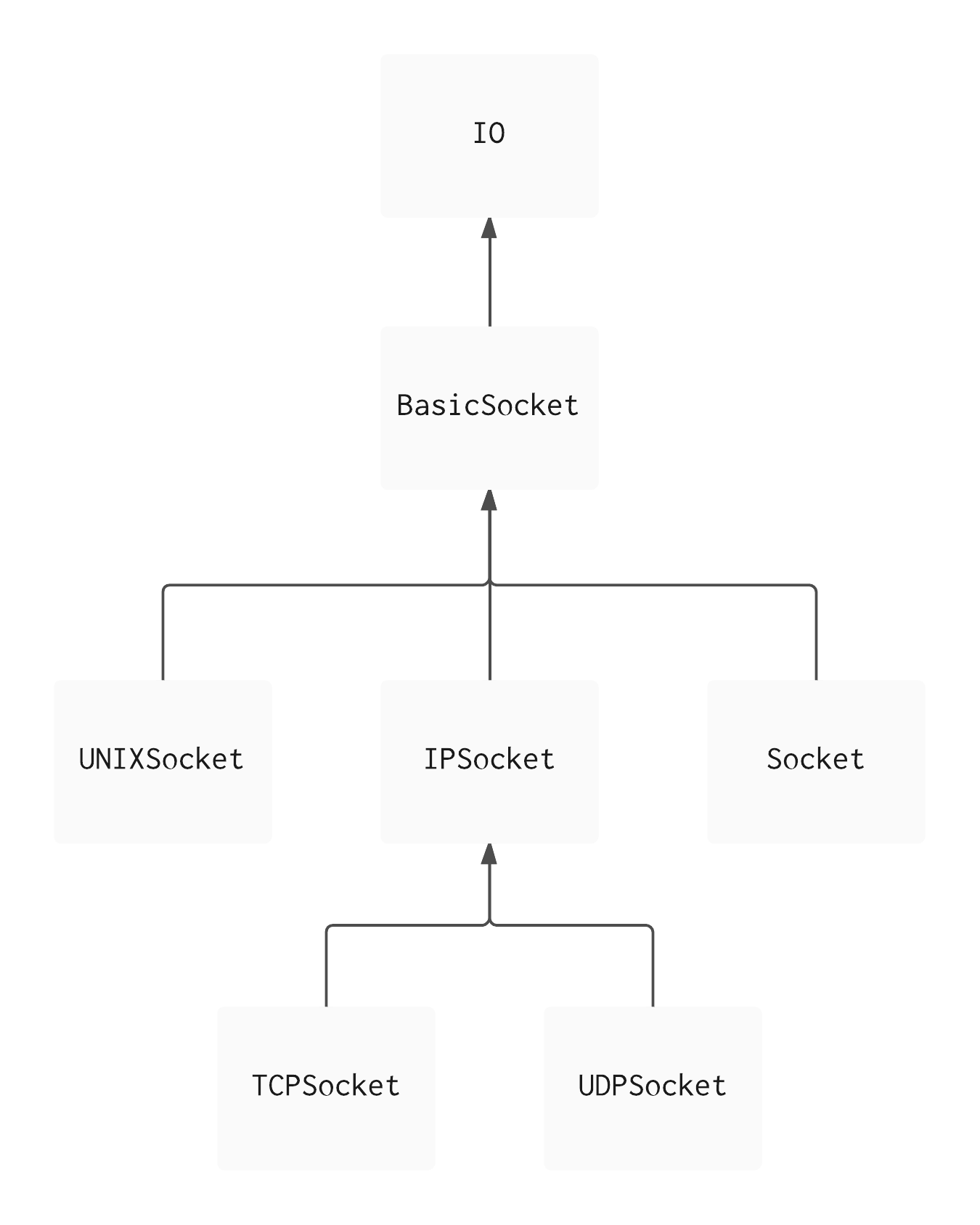Mathias Jean Johansen
Investigating Sockets
During this summer, I’ve revisited an old side project of mine which is a Ruby-based micro framework for web development. Like most web frameworks in Ruby, this heavily depends on Rack which can be extremely helpful in a lot of ways, but you do not learn all the lower levels of how the server handles requests from clients and so forth that I find somewhat intriguing. This ultimately led me to investigate the different sockets that the Ruby standard library provides and in general improve my understanding on sockets. This post covers some of my findings from the process.
Sockets are the endpoints of bidirectional communication channels. The Ruby standard library has six different socket classes: UNIXSocket, UDPSocket, TCPSocket, Socket, IPSocket, and they all inherit from the sixth socket class BasicSocket. The class hierarchy for the sockets in Ruby looks like this:

Starting from the bottom, TCP is the most commonly used protocol on the Internet as it offers error correction, and like UDP it belongs to the transport layer. Furthermore, TCP sockets guarantee delivery which means that it will resend packets if needed and stop the data flow until packets are successfully transferred, so TCP sockets are considered very reliable.
Implementing a small single-threaded web server that prints the current time to the user could be done this way utilizing the TCPServer.
require 'socket'
server = TCPServer.new('localhost', 2345)
loop do
client = server.accept
client.gets
client.puts "Time is #{Time.now}"
client.close
end
Accessing http://localhost:2345 in the browser would then return the current time to the user. This is actually what I started out with when I was replacing Rack with sockets, and from here you need to figure out how to match URLs from the user, handle multiple users, send/receive POST and GET parameters, send the necessary headers to the browser and so on. This process reveals how much work Rack actually does for you, but I enjoy seeing how much I can do without it as well.
Moving on to UDP, this protocol, on the other hand, is considered unreliable, but it offers speed why it is often used for streaming purposes. Also, UDP packets are remarkably smaller than TCP packets. Unlike TCP, UDP does not provide any error correction or flow control, so errors will be present.
Since UDP does not do retransmissions, we might also lose content, or content might be ordered the wrong way as UDP does not guarantee in-order delivery. Thus, TCP is quite obviously the most appropriate protocol of the two to rely on when implementing a web framework without Rack.
Implementing a simple chat server and client using UDPSocket could be done the following way:
# udp-server.rb
require 'socket'
socket = UDPSocket.new
socket.bind('localhost', 33333)
loop do
data, address = socket.recvfrom(1024)
puts "From address: '#{address.join(',')}', message: #{data}"
end
socket.close
# udp-client.rb
require 'socket'
socket = UDPSocket.new
while message = gets.chomp
socket.send(message, 0, '127.0.0.1', 33333)
end
socket.close
The server creates a new UDPSocket and binds it to localhost on port 3333. From here, it will simply run a loop listening for messages and print them. The client works in a similar fashion. It creates a new UDPSocket, runs a loop that receives messages from the standard input which it then sends to our server.
Moving up the class hierarchy, we have UNIXSocket, IPSocket and Socket where the latter will not be elaborated. A UNIXSocket basically represents a UNIX domain stream client, and what characterizes a UNIX domain stream is that it does not use any underlying network protocol for communication, so it has less overhead. It solely exists inside a single computer, and processes communicating with a UNIX domain stream needs to be on the same computer too. For these reasons, the UNIXSocket is obviously not suited for a web framework, but the UnixSocketForker by Ryan LeCompte is an interesting usage of the UNIXSocket in a Ruby context. Finally, the IPSocket which is also the superclass of TCPSocket and UDPSocket is not so exciting on its own and therefore a little difficult to leverage, but one common usage for the IPSocket is looking up the IP address of the host which we could do in the following way:
require 'socket'
ip = IPSocket.getaddress(Socket.gethostname)
puts ip #=> "192.168.0.100"
Investigating sockets have been an interesting journey so far, and I’ll certainly need to investigate them even more for this project in particular. I hope you’ve found this whirlwind tour of the Ruby sockets useful, and feel free to ping me if you’ve any questions.